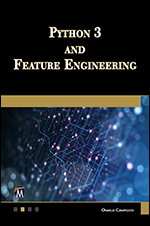Convo Nets for Visual Recognition: Computer Vision & CNN Architectures
Neural Networks
| Intermediate
- 10 videos | 48m 56s
- Includes Assessment
- Earns a Badge
Learners can explore the machine learning concept and classification of activation functions, the limitations of Tanh and the limitations of Sigmoid, and how these limitations can be resolved using the rectified linear unit, or ReLU, along with the significant benefits afforded by ReLU, in this 10-video course. You will observe how to implement ReLU activation function in convolutional networks using Python. Next, discover the core tasks used in implementing computer vision, and developing CNN models from scratch for object image classification by using Python and Keras. Examine the concept of the fully-connected layer and its role in convolutional networks, and also the CNN training process workflow and essential elements that you need to specify during the CNN training process. The final tutorial in this course involves listing and comparing the various convolutional neural network architectures. In the concluding exercise you will recall the benefits of applying ReLU in CNNs, list the prominent CNN architectures, and implement ReLU function in convolutional networks using Python.
WHAT YOU WILL LEARN
-
Discover the key concepts covered in this courseDefine and classify activation functions and provide a comparative analysis with the pros and cons of the different types of activation functionsRecognize the limitations of sigmoid and tanh and describe how they can be resolved using relu along with the significant benefits afforded by relu when applied in convolutional networksImplement rectified linear activation function in convolutional networks using pythonList the core tasks that are used in the implementation of computer vision
-
Develop convolutional neural network models from the scratch for object photo classification using python and kerasDescribe the concept of fully-connected layer and illustrate its role in convolutional networksDescribe the convolutional neural network training process workflow and the essential elements that we need to specify during the training processList and compare the various architectures of convolutional neural networksRecall the benefits of applying relu in convolutional neural networks, list the prominent architectures of convolutional neural networks and implement relu function in convolutional networks using python
IN THIS COURSE
-
1m 3s
-
10m 48sIn this video, we will learn how to define and classify activation functions, as well as the pros and cons of different types of activation functions. FREE ACCESS
-
3. Why ReLU in Convolutional Neural Networks4m 20sUpon completion of this video, you will be able to recognize the limitations of Sigmoid and Tanh and describe how they can be resolved using ReLU. You will also learn about the significant benefits afforded by ReLU when applied in convolutional networks. FREE ACCESS
-
4. Implementing ReLU3m 58sFind out how to implement the rectified linear activation function in convolutional networks using Python. FREE ACCESS
-
5. Computer Vision Tasks4m 58sUpon completion of this video, you will be able to list the core tasks used in the implementation of computer vision. FREE ACCESS
-
6. Developing Object Photo Classification Model6m 31sFind out how to develop convolutional neural network models from scratch for object photo classification using Python and Keras. FREE ACCESS
-
7. Fully-connected Layer3m 33sAfter completing this video, you will be able to describe the concept of a fully-connected layer and illustrate its role in convolutional networks. FREE ACCESS
-
8. Convolutional Neural Network Training Process3m 55sAfter completing this video, you will be able to describe the convolutional neural network training process workflow and the essential elements that we need to specify during the training process. FREE ACCESS
-
9. Convolutional Neural Network Architectures6m 2sAfter completing this video, you will be able to list and compare the various architectures of convolutional neural networks. FREE ACCESS
-
10. Exercise: Applying ReLU in CNN3m 49sUpon completion of this video, you will be able to recall the benefits of applying ReLU in convolutional neural networks, list the prominent architectures of convolutional neural networks, and implement ReLU function in convolutional networks using Python. FREE ACCESS
EARN A DIGITAL BADGE WHEN YOU COMPLETE THIS COURSE
Skillsoft is providing you the opportunity to earn a digital badge upon successful completion on some of our courses, which can be shared on any social network or business platform.
Digital badges are yours to keep, forever.



